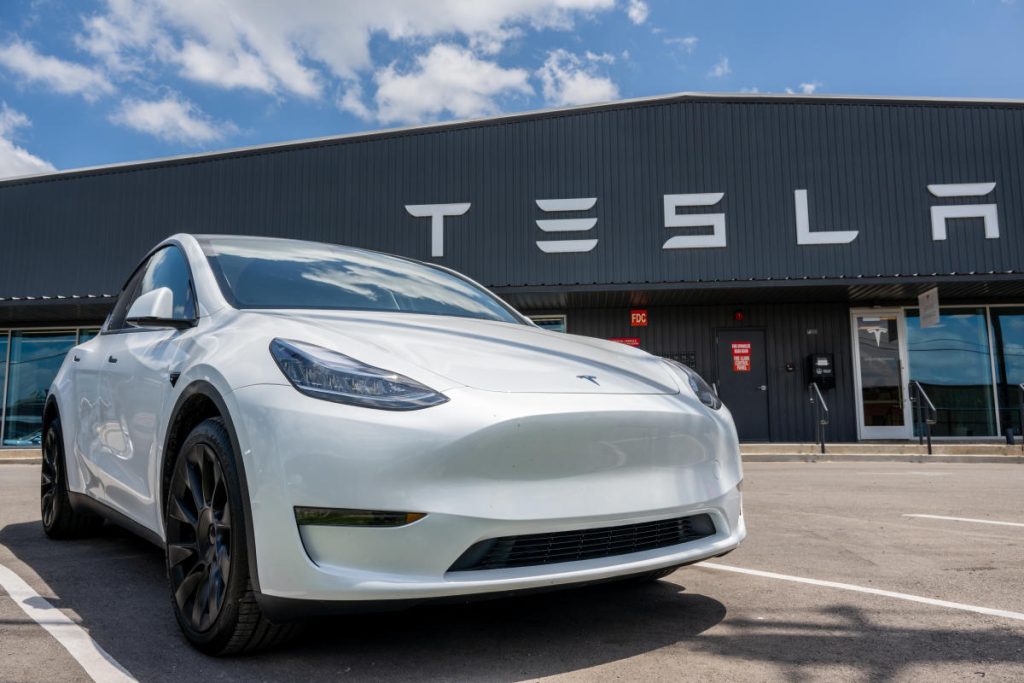The launch of Tesla’s robotaxi service is tentatively set for this weekend in Austin, Texas, entering a crowded arena of autonomous vehicles already operating in the city. Tesla is competing with driverless Waymo taxis that are already transporting people around the city, while Amazon’s Zoox and Volkswagen are testing robotaxis there too.
Tesla’s driverless taxi service launch has been highly anticipated by investors and fans, however, officials and lawmakers have expressed automotive safety concerns. On Wednesday, Texas lawmakers sent a letter to Tesla urging the company to delay its robotaxi service launch until September, when a new state law regulating autonomous vehicles takes effect.
It adds to another letter, sent by the National Highway Traffic Safety Administration to Tesla last month, asking for additional safety information about its robotaxi rollout.
That same month, Elon Musk, Tesla’s chief executive, acknowledged the need for national regulations around autonomous vehicles. “It’s going to be important to have a unified set of national regulations for self-driving cars,” he told CNBC. “Otherwise, you’re going to get into this weird situation where, if you’re driving from Maine to New York, you’re going to go through 10 different sets of regulations. Cars are going to behave differently. It’s not going to make any sense.”
Here’s what we know about the driverless service set to launch this weekend.
What is Tesla’s robotaxi service?
For the initial launch of the fully autonomous ride-hailing robotaxi service, Tesla will use its internal fleet of Model Y electric vehicles, updated with the company’s Full Self-Driving (FSD) software, without a driver. If the autonomous cars run into a safety issue, a remote driver can step in and take control of the vehicle.
Wait, what about the Cybercab?
The Cybercab is Tesla’s driverless taxi that will also rely on the FSD software without a human driving the vehicle. The initial launch of Tesla’s robotaxi service won’t include the Cybercab because it isn’t expected to go into production until at least 2026.
Musk says each Cybercab will likely cost less than $30,000 to produce. The fully autonomous vehicle won’t have a steering wheel or pedals and will have a large center touchscreen. The two-passenger vehicle won’t have a backseat or a rear window but will have a rear cargo area. Musk says it won’t have a traditional charging port and will rely on inductive (wireless) charging, which will charge by parking over a pad embedded in a designated charging area.
Back to the robotaxi service. When exactly is the launch, anyway?
Musk said earlier this year that the service would launch sometime in June. Bloomberg News then reported the launch was poised to happen on June 12, citing a person familiar with the matter.
Two days before the anticipated launch, Musk reposted a video on X that showed Tesla testing a self-driving Model Y car in Austin, with what appeared to be no driver.
Later that day, Musk replied to a user on X that the tentative rollout of the robotaxi service was June 22.
“We are being super paranoid about safety, so the date could shift,” Musk said. He also indicated that the first driverless trip from the Tesla factory to a customer’s house will take place on June 28, which is the billionaire’s birthday.
Speaking of safety, what are the concerns from state lawmakers?
The letter that Texas Democratic lawmakers sent Wednesday to Tesla’s director of field quality urged the company to delay the robotaxi service launch until a new Texas law takes effect, on Sept. 1.
The law revises previous state guidelines for autonomous vehicles and requires the operators to receive prior authorization from the Department of Motor Vehicles. The letter states that in order to get that authorization, Tesla needs to show: that the vehicles can operate while abiding by state traffic laws, have a recording device, comply with federal standards, are properly registered and insured, and can “achieve a minimal risk condition” if the autonomous system stops working.
The Texas lawmakers asked the company to provide “detailed information demonstrating that Tesla will be compliant with the new law upon the launch of driverless operations in Austin” if they decide to proceed with the launch over the weekend.
Yahoo News has reached out to Tesla for comment.
What will the launch look like?
In addition to the Model Y taxis being remotely monitored at first, Musk told CNBC that the vehicles will also be “geofenced” to certain areas of Austin that Tesla considers the safest to navigate.
“We want to deliberately take it slow,” Musk said. “I mean, we could start with 1,000 or 10,000 [robotaxis] on day one, but I don’t think that would be prudent. So we will start with probably 10 for a week, then increase it to 20, 30, 40.”
Can I expect to hail a Tesla robotaxi this weekend?
For the initial launch, the robotaxi service is expected to only be available to Tesla employees or by invite. “The service will probably not be available to the general public for several months, analysts said,” according to the New York Times.
What’s in store for the future?
Musk says he hopes to have by the end of 2026 “over a million Teslas” doing “unsupervised full self-driving, where you do not need to pay attention.”
Musk had originally promised in 2019 that there would be 1 million self-driving robotaxis on the road by 2020.



